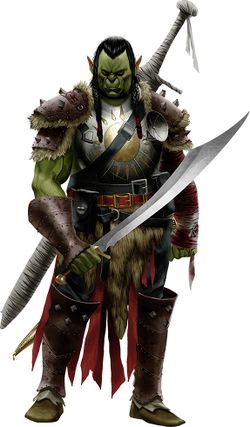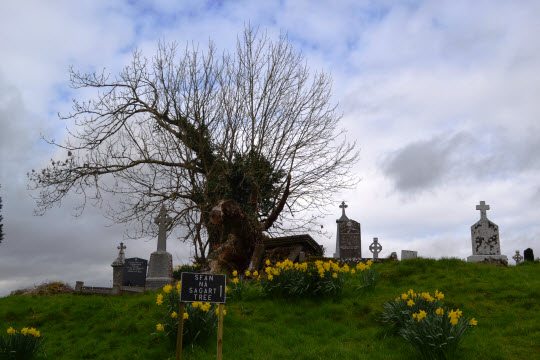In October of 1641, Irish Catholics attempted a coup d’état, hoping to seize control of the English administration in Ireland. This Irish Rebellion of 1641 failed and the rebellion developed into an ethnic conflict between Irish Catholics on one side, with English and Scottish Protestants on the other. U2 writes songs about it.
The lead-up to this attempted a coup d’état was the political tension of the Protestant Reformation, which culminated with Charles I declaring that Anglicanism was the only approved form of worship. The Penal Laws, a series of laws imposed in an attempt to force Irish Catholics and Protestant dissenters to hug it out, were implemented and non-attendance at Protestant Church of Ireland services was punishable by fines or even arrest, which didn’t lead to hugs.
Most of the Irish Catholic upper classes weren’t necessarily ideologically opposed to the sovereignty of Charles I of England over Ireland, but they at least wanted to be full subjects of the triple monarchy (England, Scotland, and Ireland), while maintaining their position in Irish society, particularly because they still held a majority.
They appeared to have reached an agreement a decade earlier when some demands were granted in return for raising taxes. But Irish Catholics were disappointed when–after paying the increased taxes–Charles I postponed the implementation of their last two demands.
To further truncate history, let’s cut to the chase: It turned violent and messy, as history teaches us that these things almost always do.
These Penal Laws gave permission for the English government to spy upon Irish Catholic priests, because, you see, a priest could be useful conduits for clandestinely obtaining supplies, information, and gold from outside, thereby helping the Irish Catholics maintain their independence from English Protestant authorities.

In a move reminiscent of the Superhero Registration Act, priests had to register to be allowed to preach, and those who didn’t were arrested and executed. Even the priests who did conform were often deported or otherwise incentivized to leave (hello, Pilgrims!), creating a strategy to see the Irish Catholic clergy die out in Ireland within a generation.
This gave the Protestants an idea: They would establish priest hunters, agents acting on behalf of the English government who were licensed to capture Irish Catholic priests during these Penal Times.
Priest hunters were effectively bounty hunters and in most cases were criminals who were forced into the position by promise of a pardon for past crimes.
Well, if Priest Hunter sounds like a D&D class to you, then you’ve found a home at Nerds on Earth. Let’s shift now to the most famous of these priest hunters, then finish by sharing a few thoughts on how this interesting slice of history can enrich your D&D games.
Seán na Sagart: Priest Hunter | D&D Rogue
Born John O’Mullowny, this alcoholic horse thief was sentenced to death before the Anglican-controlled judiciary took note of his low character and cut him a deal. John O’Mullowny would escape the hangman’s noose if he’d agree to turn priest hunter.
O’Mullowny took the deal on the spot and quickly gained notoriety as a talented rogue. As he racked up bounty rewards, he became known as Seán na Sagart or John of the Priests.
With the Penal Law making fugitives of clerics, they were forced to conduct worship liturgies in secret, remote locations, making night time worship more common, which only makes it cooler for a RPG setting. This also gave rise to secret rooms that were constructed to hide priests.
In fact, the Irish did all they could to keep their faith alive and protect their persecuted clergy, despite hunger, torture and the presence of priest hunters. When someone did inform on a priest, other locals often effected revenge by burning his house and farmyard. The risks were high for both priest hunters as well as informants.
But with high risk also came the possibility of high reward. The bounty rates for capture ran about £100 for a Bishop, down to £20 for an unregistered priest, huge amounts of money at the time. But if you had to kill them because they invaded capture, then so be it.
So Seán na Sagart was hated by everyone, as someone who exhibits chaotic evil tendencies often prove to be. Despite what anyone felt or thought (today or in those days of yesteryear) about the priesthood, it felt incredibly unseemly to hunt them down, particularly because history tells us that the majority of the priests were leading humble lives, sneaking food to the poor.
As if you needed any more evidence, Seán na Sagart’s go-to finishing move was to roll his bluff check, pretending to be ill and on his death bed. When a priest was called in to minister to him and allow him to confess his numerous sins, Sagart would pull a dagger and kill his confessor.
Seán na Sagart: NPC | Party Member?
An individual as murderous as Seán na Sagart is a bad template for a party member, but he’d make a heck of a recurring villain in a campaign. He could be the recurring thug, hired by the evil king intent on ridding the land of a rival clerics or paladins.
If you know the excellent Pathfinder world of Golarion, you know there are a wealth of places to add in hooks of intrigue to a tabletop RPG campaign, and Seán na Sagart slides right in as a rogue.
Essentially, you’re taking the role of PC and flipping it backwards. For example, tabletop parties are usually hunting down some cult leader or fanatic who has sleeper agents spread across the land.
Tie in a Priest Hunter as an enemy who’s against a certain deity’s teachings. You get bonus points for making their actions morally ambiguous. Maybe they’re not targeting clerics of ‘good’ deities, but instead focusing on neutral or evil ones.
Since Seán na Sagart was a master of deception, you could incorporate a bunch of red herrings and false flags. Murders staged to look like accidents. Dangerous mishaps at churches and religious ceremonies. Priest Hunters cover their tracks and don’t leave obvious clues.
A Priest Hunter might even sidle up to the party under false pretense to get close to the party’s cleric. Or they might at least send one of their agents. They will appeal to the sensitivities of the party, working alongside them until the timing is perfect.

Priest Hunter: A Fitting Farewell
When you live by the dagger, you die by the dagger. Sagart hunted priests with steady success until he had killed all but two of them. But those last two were wily and lived in disguise.
But Sagart proved too much for one of them. Thinking like only a mad man would, Sagart suspected that the last remaining priest would attend the funeral of his fallen, which he did, dressed as a woman.
The priest’s disguise didn’t fool Sagart though and he attacked him right there at the funeral. But unlike many of the other priests who had been sneak attacked by someone whom they thought was dying, this priest fought back.
He was able to hold off priest hunting John O’Mullowney long enough for a homeless man, known as McCann, to stab and kill him.
The body of John O’Mullowney aka John of the Priests aka Seán na Sagart was thrown into a lake. He was later fished out of the water and buried in the graveyard of Ballintubber Abbey. Legend has it that an old ash tree marked the site of his grave for a century and a half, yet never blossomed after his body was placed in the ground beside it.
[You want a deep dive into this period of history, specifically regarding the Priest Hunters? Check out The Priest Hunters: The True Story of Ireland’s Bounty Hunters by Colin C Murphy, published by O’Brien Press, a publisher that sounds like they’d know a thing or two about it.]

